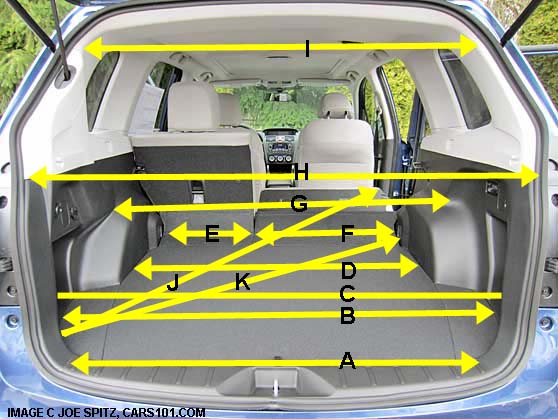My wife Hannah and I got a car a few months ago!
Specifically, it is a used 2021 Honda HR-V, which (for us) strikes a great balance of being small on the outside and big on the inside. Most importantly, it’s very very blue:

Anyways!
Before settling on the HR-V, we researched a bunch of different cars to determine what would work best for us. During this time, I came across Cars101.com, a glriously old-fashioned and information-packed website about Subaru cars maintained by a guy named Joe Spitz. Among other things, his site includes diagrams with hand-measured lengths for every aspect of the cars, in particular their cargo areas. For us detail-oriented folk, it’s pure gold!
Of course, I wasn’t able to find anything equivalent for the HR-V (or any other car for that matter), which I thought was a real shame.
And so, with this in mind and now that we’ve actually bought a car, I’ve decided to try to emulate Joe’s style of internal measurements for the HR-V. Maybe someday in the future, it will be useful to someone else looking to buy a car – at worst, it’ll be a good reference for Hannah and me!
Note: I’ve stolen the first two pictures from Joe’s website, since they were already nice and had all the labels. They are thus pictures of a Subaru Forester and not a Honda HR-V, but the measurements are indeed from our HR-V. The last picture, of the seats flipped up, is of our car since no Subaru has an equivalent. I tried to keep the same style.
Horizontal Lines

| # | Description | Measure |
|---|---|---|
| A | (rear gate width at bottom of gate) | 42” |
| B | (cargo width by rear gate) | 52” |
| C | (cargo width by rear gate including side storage) | 52” |
| D | (cargo width between wheel wells) | 39.5” |
| E | (left rear seat width) | 24” |
| F | (right rear seat width) | 16” |
| G | (cargo with top of wheel wells) | 43” |
| H | (rear gate width in middle) | 43” |
| I | (rear gate width at top) | 34ish” |
| J | (angle from rear left cargo hook to front right, rear seats down) | 79” |
| K | (angle from rear left cargo hook to front right, rear seats up) | 50” |
Vertical Lines

| # | Description | Measure |
|---|---|---|
| L | (width of gate opening from lower left to upper right) | 49.5” |
| M | (cargo floor length to back of rear seats) | 31” |
| N | (height of rear seat) | 24.5” |
| O | (cargo door height) | 33” |
| P | (cargo floor length to center dash console) | 94” |
| Q | (height center of floor to ceiling) | 37” |
| R | (cargo floor length to top of rear seat folded down) | 62” |
| T | (height from rear of wheel well to the bottom of the window) | 25” |
| U | (length to rear of wheel well) | 11” |
| V | (cargo floor length to back of front seat pushed forward and upright) | 73” |
The “Magic Seat”

| # | Description | Measure |
|---|---|---|
| 1 | (height from middle lump to roof) | 46” |
| 2 | (height from bottom of floor to roof) | 48” |
| 3 | (length from under-seat bar to front seat normal / armrest) | 22” |
| 4 | (length from under-seat bar to front seat pushed forward) | 31” |
| 5 | (width of single seat floor excluding armrest and lump) | 21.5” |
| 6 | (width inside between doors) | 52” |
Maximum Prisms
And, just to bring this exercise to its logical conclusion, we can use the above measurements to determine the largest rectangular prisms, in terms of volume, that we could possibly fit in the car. I imagine this could be helpful in the event we need to move a large object (like an appliance or piece of furniture) – after all, it’s never fun to show up and then find out the thing doesn’t fit in your car!
| Configuration | Components | Measurements | Volume |
|---|---|---|---|
| Rear seats down, tall item | ? x Q x D | 56” x 37” x 39.5” | 47.3 ft3 |
| Rear seats down, long item | R x T x D | 62” x 25” x 39.5” | 35.4 ft3 |
| Rear seats down, very long item | V x T x E | 73” x 25” x 24” | 25.4 ft3 |
| Rear seats up, wide item | 6 x 3 x 1 | 52” x 22” x 46” | 30.5 ft3 |
| Rear seats up, tall item | 5 x 4 x 2 | 21.5” x 31” x 48” | 18.5 ft3 |
For the “?”, I didn’t measure this, but it’s the distance to the front seats from the normal of the roof of the car where it meets the top of the rear windshield. I’m estimating this number to be about 6” less than R, it might be a little more.